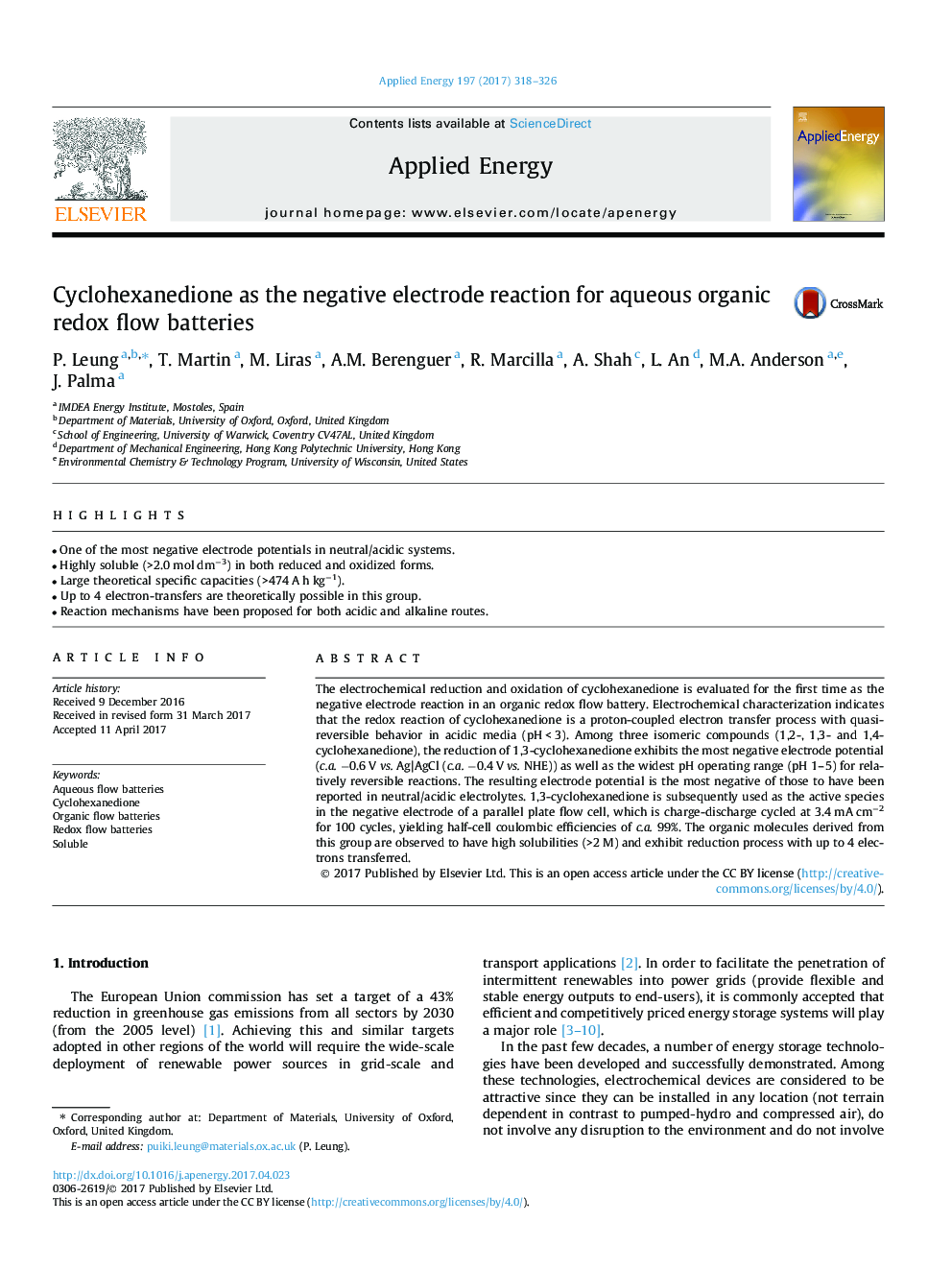| کد مقاله | کد نشریه | سال انتشار | مقاله انگلیسی | نسخه تمام متن |
|---|---|---|---|---|
| 4916268 | 1428093 | 2017 | 9 صفحه PDF | دانلود رایگان |
عنوان انگلیسی مقاله ISI
Cyclohexanedione as the negative electrode reaction for aqueous organic redox flow batteries
دانلود مقاله + سفارش ترجمه
دانلود مقاله ISI انگلیسی
رایگان برای ایرانیان
موضوعات مرتبط
مهندسی و علوم پایه
مهندسی انرژی
مهندسی انرژی و فناوری های برق
پیش نمایش صفحه اول مقاله

چکیده انگلیسی
The electrochemical reduction and oxidation of cyclohexanedione is evaluated for the first time as the negative electrode reaction in an organic redox flow battery. Electrochemical characterization indicates that the redox reaction of cyclohexanedione is a proton-coupled electron transfer process with quasi-reversible behavior in acidic media (pHÂ <Â 3). Among three isomeric compounds (1,2-, 1,3- and 1,4-cyclohexanedione), the reduction of 1,3-cyclohexanedione exhibits the most negative electrode potential (c.a. â0.6Â VÂ vs. Ag|AgCl (c.a. â0.4Â VÂ vs. NHE)) as well as the widest pH operating range (pH 1-5) for relatively reversible reactions. The resulting electrode potential is the most negative of those to have been reported in neutral/acidic electrolytes. 1,3-cyclohexanedione is subsequently used as the active species in the negative electrode of a parallel plate flow cell, which is charge-discharge cycled at 3.4Â mAÂ cmâ2 for 100 cycles, yielding half-cell coulombic efficiencies of c.a. 99%. The organic molecules derived from this group are observed to have high solubilities (>2Â M) and exhibit reduction process with up to 4 electrons transferred.
ناشر
Database: Elsevier - ScienceDirect (ساینس دایرکت)
Journal: Applied Energy - Volume 197, 1 July 2017, Pages 318-326
Journal: Applied Energy - Volume 197, 1 July 2017, Pages 318-326
نویسندگان
P. Leung, T. Martin, M. Liras, A.M. Berenguer, R. Marcilla, A. Shah, L. An, M.A. Anderson, J. Palma,